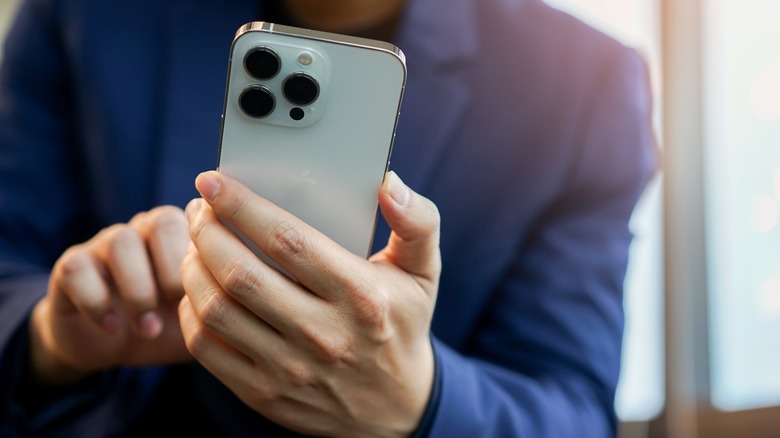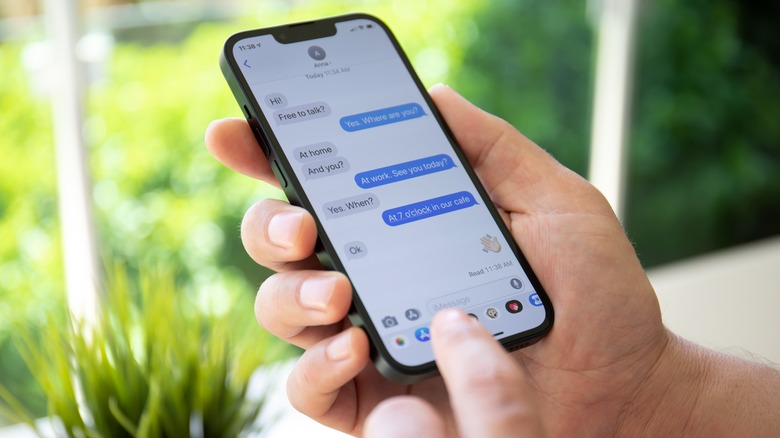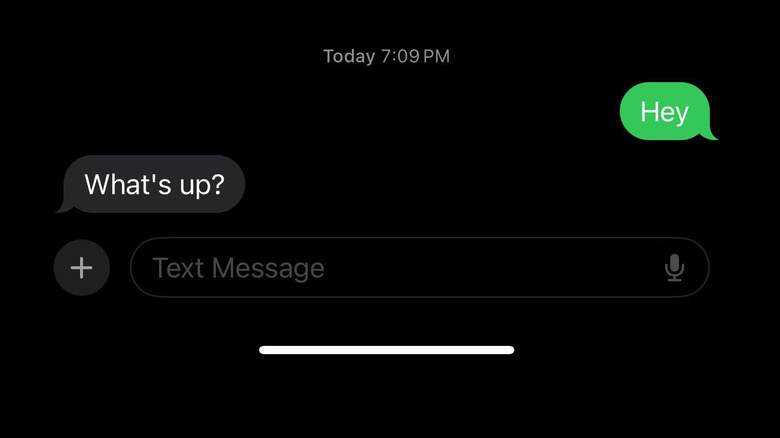What Does SMS Mean On iPhone's Messaging App?
These days, sending a text message is the preferred mode of communication by most people. Not only is it the more discreet and polite option — it gives the recipient complete control over when to respond, among other reasons — it's also a method that allows people space to compose their thoughts and come up with the best way to convey their intentions through words.
A lot of cell phone plans come with unlimited texting. However, with the abundance of mobile messaging apps available today, most users don't even tap into their phone carrier's text messaging allowance. Instead, they opt to communicate with their acquaintances through their go-to social media app's built-in private messaging feature. If you happen to be an iPhone user, you also have the added benefit of having Apple's built-in Messages app at your disposal, which can handle a lot more than a generic text message.
Short Message Service — more commonly known as SMS — is the driving force behind text messaging, a technology that's been around for over 31 years. A standard text message has a 160-character limit. Back in the early days of the protocol, this mattered because cell phone plans only had a limited number of free text messages you could send per month, so people had to resort to using textspeak to cram multiple sentences into one SMS text. Today, SMS messaging is not as precious anymore — thank you, unlimited text messaging plans! — and although it's also been somewhat cast by the wayside in lieu of more efficient app alternatives, the ability to send and receive SMS texts is still useful to have.
The differences between SMS texts and other message types on iPhone
The capability to fire off an SMS text exists through the iPhone's Messages app, along with additional features that make it such a robust messaging service. If you're not sure how to distinguish an SMS text from other possible message types you can send and receive via Apple's default messaging app, the easiest way to recognize one is through the color of the message bubble the text comes in.
Long-time iPhone users ought to know by now that messages that appear in a blue message bubble in the Messages app indicate an iMessage message. These refer to texts, photos, or videos that are sent via Wi-Fi or mobile data to fellow Apple users who also have the Messages app on their iPhone, iPad, iPod touch, or Mac. iMessage messages are fully encrypted and secure from third-party entities.
SMS text messages, on the other hand, show up in a green message bubble. Unlike iMessage messages that fully rely on internet connectivity, you need a phone plan that covers text messaging to be able to send SMS texts using your iPhone. SMS texts are also not encrypted.
Why it's important to keep track of SMS texts in the Messages app
When you see a green message bubble pop up in the Messages app conversation you have with someone, it means they aren't receiving your message on an iPhone and are probably using an Android device to communicate with you. It's worth noting that any text you send to Android phone users through the Messages app will always come in and out of your inbox as an SMS message. These texts will count against your phone plan's text messaging allotment.
This difference in mobile operating systems means that the recipient probably won't be able to enjoy messaging features that are exclusive to Apple device users. For instance, they won't be able to enjoy animated messages via the Digital Touch feature. You also won't be able to receive read receipts for messages you've sent as the feature is incompatible with SMS.
If the SMS text recipient has an older Android phone and uses their phone manufacturer's own text messaging app instead of Google Messages, any messages you send them may only be accessible locally on the mobile device. In contrast, any messages you exchange with fellow iPhone users via the Messages app can be accessed on any Apple device that you own.


